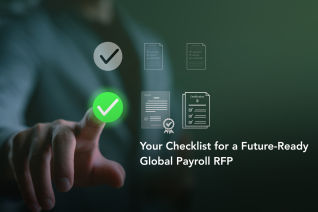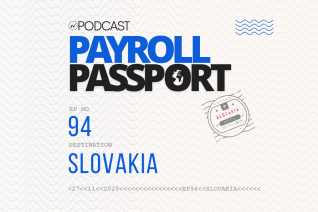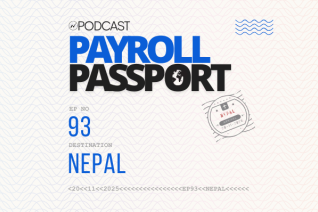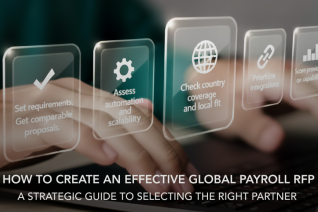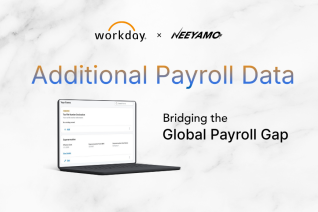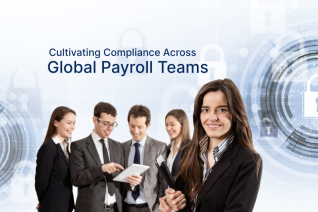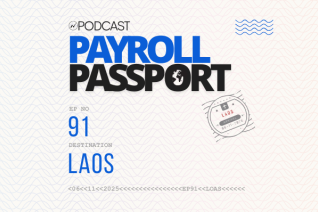Aligning Payroll Practices with ESG Goals

How payroll can become a strategic enabler for sustainability, equity, and ethical governance.
As organizations around the world sharpen their focus on Environmental, Social, and Governance (ESG) priorities, areas such as payroll are evolving from purely operational roles to become strategic drivers of sustainability, equity, and compliance enabling pay transparency, equitable compensation, and sustainable practices rise to the top of the corporate priority list, the payroll engine is increasingly being recognized as a powerful enabler of ESG goals.
Yet, even as corporate leaders embed ESG into their strategies, a stark disconnect persists: employees consistently rank fair pay and total rewards above environmental and social initiatives. According to PwC’s Global Workforce ESG Preferences Study, 94% of employees cite fair and equitable pay as the top driver for retention, ahead of environmental (75%) and societal practices (83%). This reveals a clear mandate: align ESG strategies not just around climate goals and governance charters, but around compensation fairness, payroll transparency, and ethical workforce engagement.
“As we continue our digital transformation journey, embedding security, transparency, and control at every level is crucial, including payroll. ESG today isn't just about ticking boxes; it's about building systems that are inherently resilient, ethical, and people-focused.” - Sachin Kawalkar, CISO and Global Head of Information Security, Neeyamo
To truly align ESG ambitions with day-to-day employee impact, organizations must integrate these principles directly into their compensation practices. Below are four areas where payroll can actively drive ESG progress:
1. Environmental Impact through Payroll
Digital Payslips & Paper Reduction
Transitioning to e-payslips can significantly reduce paper waste and lower the carbon emissions associated with printing and distribution. An automation-first payroll approach supports paperless delivery, helping organizations minimize their environmental footprint while improving the overall employee experience.
Green Commuting Incentives
Organizations can embed public transit stipends, bike-to-work allowances, and other low-emission commuting perks directly into payroll. When these incentives appear on an employee’s pay stub, they not only boost adoption but also directly tie environmental impact to compensation.
A modest shift to one remote workday a week for a million workers could result in an environmental impact equivalent to reducing carbon emissions by 250 million kilograms each year. Payroll systems can automate remote-work stipends or home-office allowances, turning flexible work into a structured sustainability initiative.
Similarly, schemes that cover up to 75% of EV home-charger installation costs can be supported through payroll by embedding EV allowances or spreading reimbursement over pay cycles, linking compensation directly to low-emission commuting.
2. Social Equity Embedded in Pay
Fair & Equitable Salary Structures
Aligning salary bands with market benchmarks, ensuring living wage compliance, and deploying transparent performance bonuses are critical social commitments. Payroll systems can help automate equity checks and generate region-specific pay reports, making ESG audits more accountable and consistent.
Inclusive Benefits & Employee Well-being
Modern payroll systems can support inclusive benefit structures by automating region-specific compliance checks, administering health and wellness reimbursements, managing family leave payouts, and tracking social support disbursements. When integrated with ESG reporting tools, these functions help organizations measure and report on their social impact more effectively.
DOWNLOAD NOW | Diversity, Equality & Inclusion: Where do you stand?
3. Governance & Auditability in Payroll
Immutable Audit Trails
A robust global payroll engine logs every transaction with full traceability. A security-first payroll architecture, featuring built-in controls such as periodic audits, segregation of duties, and cross-check validations, helps organizations align with ESG reporting standards, including the Global Reporting Initiative (GRI) and the Sustainability Accounting Standards Board (SASB).
Cross-Functional Oversight
Involving Finance, HR, Legal, and Risk in payroll governance ensures compensation practices meet ethical and legal standards, while a clear framework promotes transparency and accountability in ESG efforts.
4. Bridging the Employee Engagement Gap
Personalized ESG Communication
Not all employees engage with ESG in the same way. PwC categorizes them into four personas from “Sustainability Champions” to “Pragmatic Allies.” Organizations can tailor messages accordingly:
- Champions: Show carbon-saved stats on payslips.
- Allies: Emphasize how green certifications boost employability.
- Skeptics: Highlight the financial benefits of ESG-linked perks.
- Disengaged: Keep communications simple and focused on purpose.
Moments That Matter
Embed ESG touchpoints throughout the employee lifecycle:
- Onboarding: Introduce paperless payslips and sustainable pay practices.
- Performance Reviews: Link ESG achievements to rewards.
- Bonuses: Reward employees who achieve personal ESG goals, such as reducing commute emissions or participating in green upskilling.
5 Ways Organizations Can Strengthen ESG Through Payroll
Before we conclude, here are five concrete steps every organization can take to embed ESG principles directly into payroll practices:
- Conduct Regular Pay‑Equity Audits
- Run automated analyses across roles, grades, gender, and other demographics to identify and correct any compensation gaps.
-
Publish summary findings internally (and externally, if appropriate) to demonstrate your commitment to fairness.
- Automate Multi‑Jurisdictional Compliance
- Leverage payroll systems that automatically track changes in minimum wages, mandates for benefits, and statutory filings across all operating countries.
- Reducing manual effort not only cuts errors and penalties but frees teams to focus on strategic ESG initiatives.
- Secure and Protect Payroll Data
- Implement end‑to‑end encryption, strong access controls, and immutable audit logs for every payroll transaction.
- This safeguards employee privacy and maintains trust, two cornerstones of the “Social” and “Governance” pillars of ESG.
- Extend Ethical Labor Practices Across Your Supply Chain
- Include contractors, suppliers, and contingent workers in your payroll ecosystem, applying the same standards for hours worked, living wages, and benefits.
- By bringing all workers under a unified payroll framework, you reinforce responsible labor practices at every tier.
- Enhance Transparency with ESG‑Aware Reporting
- Embed key sustainability and equity metrics such as paperless payslip adoption rates, pay‑equity remediation progress, and green‑commuting stipend uptake into your regular payroll reports.
- Sharing these figures with leadership, employees, and external stakeholders builds accountability and trust.
These actions transform payroll from a back‑office necessity into a powerful engine for your organization’s ESG journey, driving fairness, environmental stewardship, and governance excellence in every paycheck.
Payroll’s Quiet Power in ESG
From digital delivery and compliance automation to employee engagement and oversight, payroll has evolved into a strategic function that actively supports ESG goals. By embedding ESG principles into the systems that drive payroll, organizations can meet regulatory demands while reinforcing their commitment to sustainability, social responsibility, and transparent governance. Reach out to us at irene.jones@neeyamo.com to know more!
Latest Resources
Stay informed with latest updates
If you're curious and have a thirst for knowledge pertaining to the HR, payroll, and EOR universe, don't miss out on subscribing to our resources.



